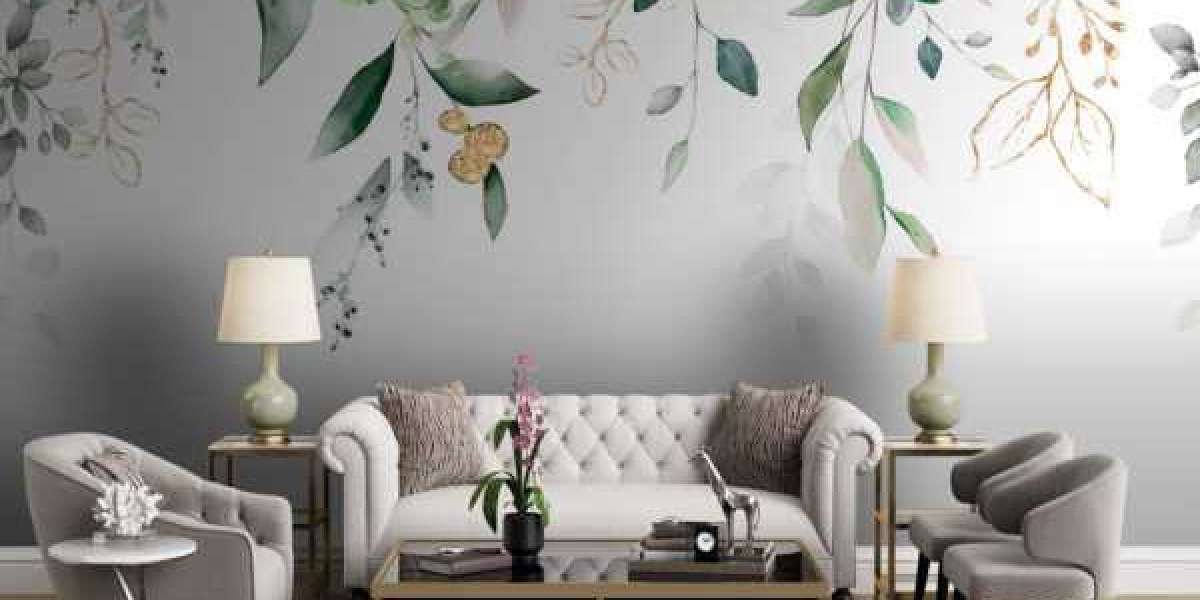Designer wallpaper is a powerful tool for transforming interiors, offering endless possibilities for expressing style, personality, and creativity. Unlike ordinary wall coverings, designer wallpaper is crafted with meticulous attention to detail, featuring premium materials, innovative patterns, and textures that set your home apart. However, selecting the right wallpaper can feel overwhelming with so many options available. This guide provides practical tips to help you choose the perfect designer wallpaper for your home, ensuring it complements your space and enhances its overall aesthetic.
1. Understand Your Space and Its Purpose
Before diving into the world of designer wallpaper, take a step back and consider the purpose of the room you’re decorating. Each space in your home serves a unique function, and the wallpaper you choose should align with the desired mood and aesthetic.
- Living Room: As the heart of your home, the living room is a space for relaxation and entertaining. Opt for wallpaper that adds warmth, elegance, or a statement feature without overpowering the space.
- Bedroom: A sanctuary for rest, the bedroom benefits from calming designs. Subtle textures, soft florals, or neutral tones can create a serene atmosphere.
- Kitchen: Kitchens often need durable wallpaper that is easy to clean. Bright patterns or bold colors can bring energy and character to this functional space.
- Bathroom: Bathrooms call for moisture-resistant options. Consider wallpaper with playful patterns or spa-like designs to enhance the ambiance.
- Entryway or Hallway: These transitional spaces are perfect for experimenting with bold designer wallpaper that makes a lasting first impression.
2. Choose the Right Style for Your Home
Designer wallpaper is available in a variety of styles, ranging from traditional motifs to contemporary abstractions. Selecting the right style is crucial to creating a cohesive look.
- Traditional: For classic homes, wallpapers featuring damask prints, floral designs, or elegant scrollwork create a timeless appeal.
- Modern: Sleek geometrics, minimalistic patterns, and bold abstract designs are perfect for contemporary interiors.
- Vintage: Retro-inspired wallpapers with vibrant colors, art deco patterns, or nostalgic motifs can add a charming touch to vintage-style homes.
- Eclectic: Combine patterns and textures for an eclectic vibe. Designer wallpaper with unconventional designs, such as animal prints or whimsical artwork, can make a bold statement.
- Nature-Inspired: Botanical prints, landscapes, and earthy tones bring the serenity of nature indoors and suit a variety of décor styles.
3. Consider the Size and Scale of the Room
The size and dimensions of your room play a significant role in determining the type of designer wallpaper that will work best.
- Small Rooms: To make smaller spaces feel larger, choose light-colored wallpaper with delicate patterns. Vertical stripes or subtle geometrics can create the illusion of height.
- Large Rooms: Bold designs with oversized patterns work well in expansive spaces, adding drama and visual interest.
- Ceilings: Don’t overlook the fifth wall! Wallpapering the ceiling with designer patterns can add depth and a sense of whimsy to any room.
4. Focus on Color
Color has the power to influence the mood and energy of a space. When selecting designer wallpaper, think about the room's existing color palette and how the wallpaper will interact with furniture, flooring, and other elements.
- Neutral Tones: Beige, gray, and cream wallpapers provide a versatile backdrop, allowing other design elements to stand out.
- Bold Hues: Jewel tones like emerald, sapphire, or ruby can add a sense of luxury and sophistication.
- Accent Colors: If you want to highlight a specific wall, use designer wallpaper with a pop of vibrant color to create a striking focal point.
- Light vs. Dark: Light-colored wallpaper makes a room feel airy and spacious, while darker tones add coziness and intimacy.
5. Explore Textures and Materials
Designer wallpaper isn’t just about patterns; the materials and textures used can significantly impact the look and feel of your walls.
- Grasscloth: Made from natural fibers, grasscloth adds an organic and textural quality to walls. It’s ideal for living rooms or bedrooms but requires careful maintenance.
- Vinyl: Durable and easy to clean, vinyl is perfect for high-traffic areas like kitchens and bathrooms. Many designer vinyl wallpapers mimic luxurious textures like silk or linen.
- Silk: Silk wallpapers exude opulence and are perfect for formal spaces. However, they require professional installation and care.
- Embossed: Raised patterns create a three-dimensional effect, adding depth and sophistication to walls.
- Metallic Finishes: Wallpapers with metallic accents reflect light beautifully and bring a touch of glamour to any space.
6. Sample Before You Commit
When choosing designer wallpaper, it’s essential to test samples in your home before making a final decision. Light, room size, and surrounding décor can all influence how the wallpaper appears.
- Lighting: Observe the sample at different times of day to see how it looks in natural and artificial lighting.
- Placement: Tape the sample to your wall and step back to evaluate how the pattern and color interact with the rest of the room.
- Texture: Feel the material to ensure it matches the tactile experience you want for your space.
7. Decide Between Full Coverage and Accent Walls
Designer wallpaper can be used to cover all walls in a room or to create an eye-catching accent wall.
- Full Coverage: Covering all walls with wallpaper creates a cohesive, immersive design. Opt for subtle patterns or neutral tones to avoid overwhelming the space.
- Accent Wall: Highlighting a single wall with bold designer wallpaper is a great way to make a statement. Place it behind a bed, sofa, or dining table to draw attention to focal points.
8. Consider Maintenance and Longevity
Designer wallpaper is an investment, so it’s important to consider its maintenance and durability.
- Washable Wallpapers: Families with children or pets may benefit from washable wallpaper that can withstand occasional spills and stains.
- Durability: In high-traffic areas, opt for wallpaper with a protective coating to ensure longevity.
- Moisture-Resistance: For bathrooms and kitchens, select moisture-resistant wallpaper to prevent peeling or damage.
9. Budget for Quality
While designer wallpaper can be expensive, it offers unparalleled quality and aesthetic value. Determine your budget beforehand and explore options within your price range. Remember, investing in high-quality wallpaper often means it will last longer and maintain its beauty over time.
10. Hire a Professional Installer
Installing designer wallpaper can be challenging, especially with intricate patterns or textured materials. A professional installer ensures a seamless application, preventing issues like misaligned patterns or air bubbles. While it’s an additional expense, the flawless results are well worth it.
Conclusion
Designer wallpaper is more than just decoration—it’s a way to express your personality and elevate your home’s interior. By considering the purpose of your space, the size of the room, color schemes, and materials, you can find the perfect wallpaper to enhance your environment. Take the time to explore samples, test textures, and think about how the design will interact with your existing décor.
With the right approach, designer wallpaper can transform your home into a space that’s not only visually stunning but also uniquely yours. Whether you choose subtle textures or bold patterns, the possibilities are as limitless as your imagination.












